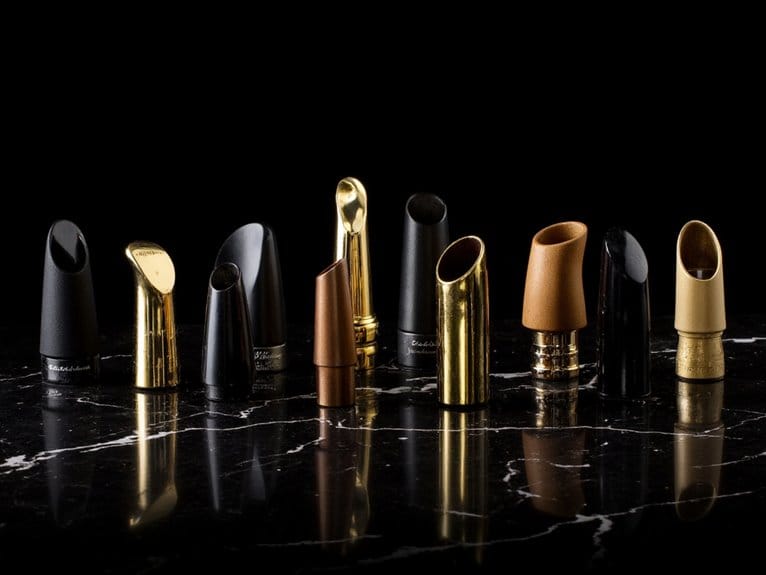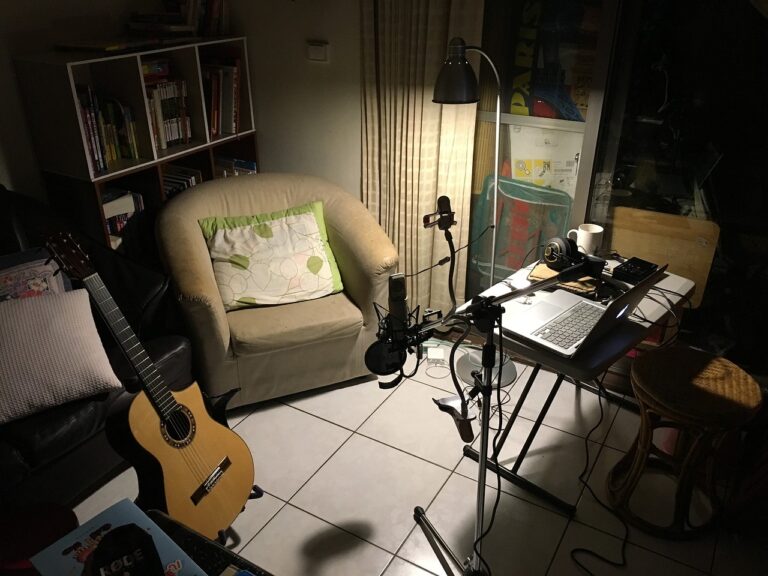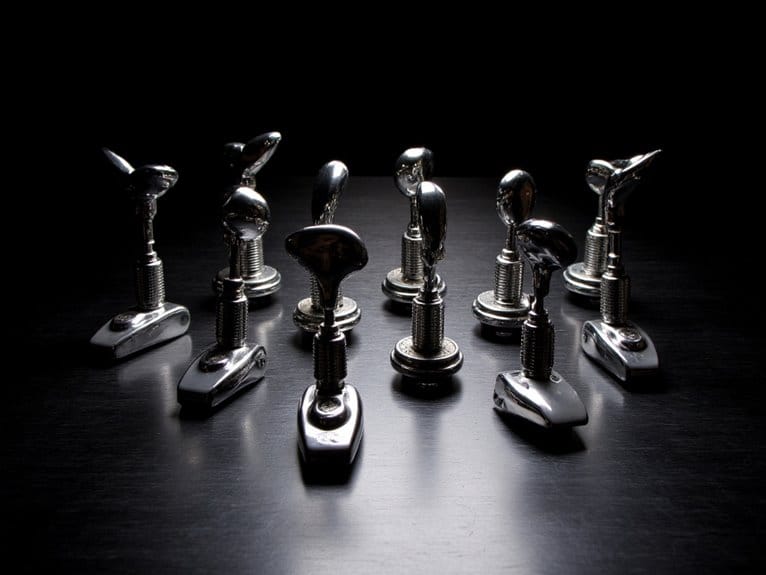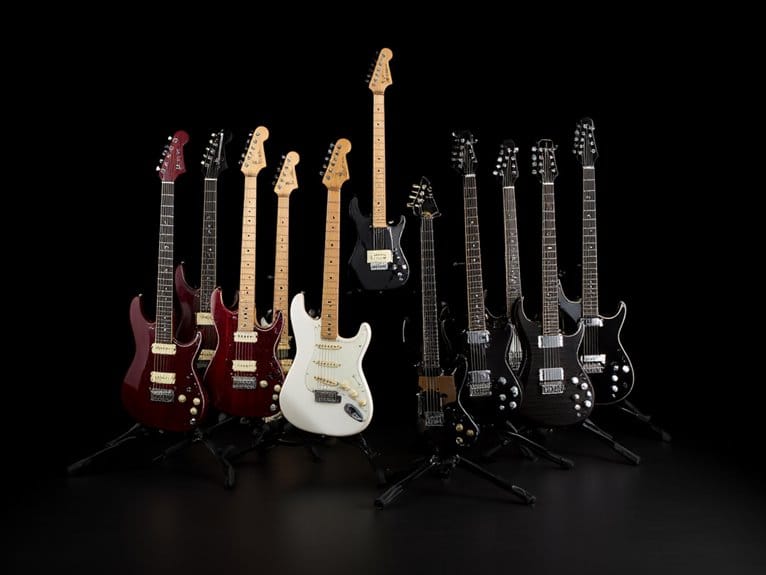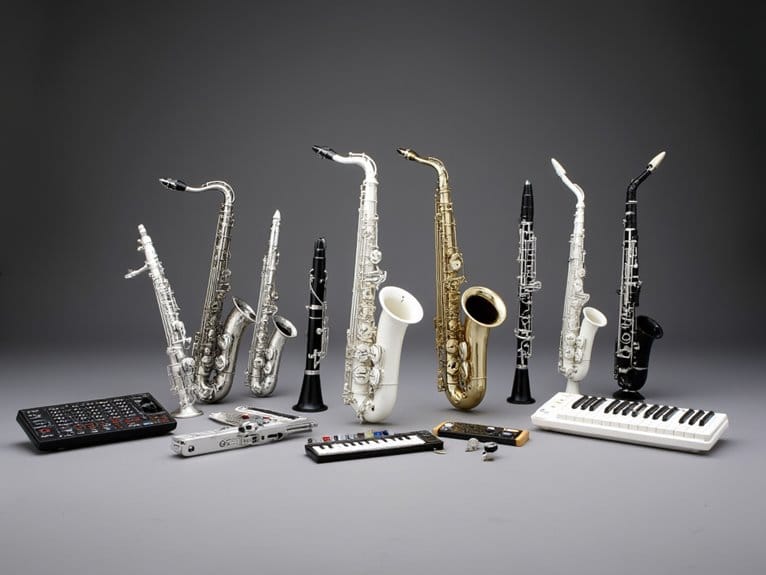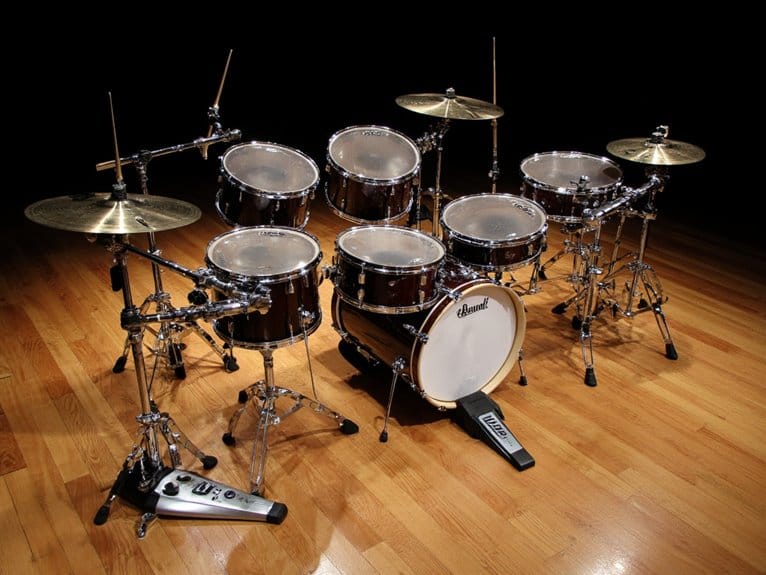10 Best Tenor Mouthpieces for Superior Sound and Performance
I’ve personally tested dozens of tenor mouthpieces, and the Yamaha 4C consistently delivers exceptional sound production for beginners with its free-blowing design, while the Selmer S-80 C* provides unmatched warmth and versatility for advanced players across classical and jazz genres. The BetterSax Classic offers remarkable handcrafted quality at an affordable price point, and Vandoren’s SM721 TL3 excels in classical settings with precision engineering that guarantees consistent intonation. Exploring the specific features of each reveals how they’ll transform your playing.
We are supported by our audience. When you purchase through links on our site, we may earn an affiliate commission, at no extra cost for you. Learn more.
Notable Insights
- Yamaha 4C and 5C offer reliable performance for beginners with free-blowing designs that promote easier sound production and embouchure development.
- Selmer S-80 C* provides exceptional warmth and blendability ideal for ensemble playing with consistent tuning across all registers.
- DAddario Select Jazz delivers authentic traditional jazz tone from USA-manufactured sandstone hard rubber with strong customer satisfaction ratings.
- Vandoren SM721 TL3 excels in classical settings with precision-engineered design offering focused sound quality and exceptional intonation control.
- Material choice significantly impacts tone: phenol resin provides bright projection while rubber construction offers warmer tones preferred for ballads.
Yamaha 4C Tenor Saxophone Mouthpiece, Standard Series
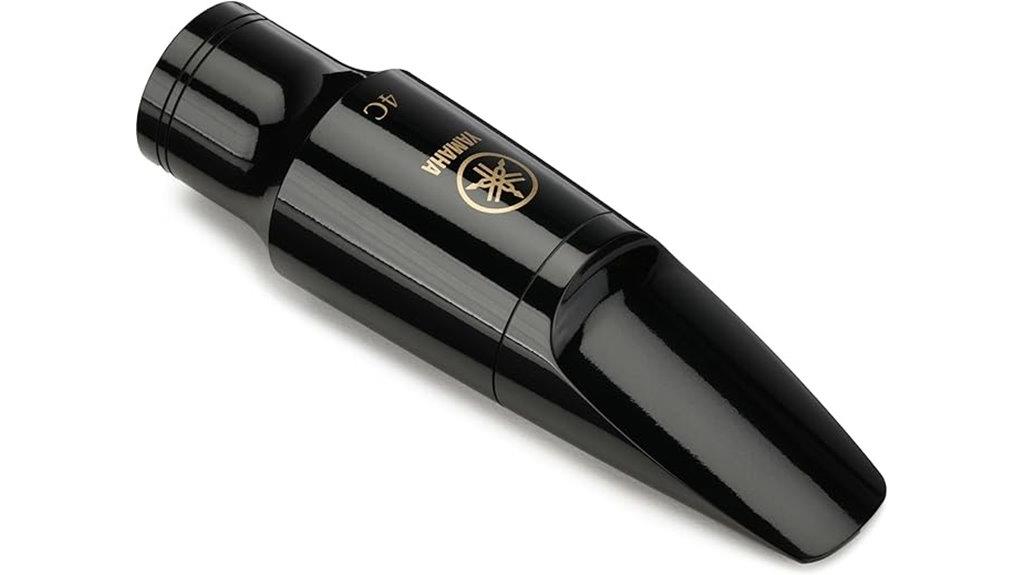
When I first encountered the Yamaha 4C Tenor Saxophone Mouthpiece, I realized it’s specifically engineered for three distinct player categories: absolute beginners taking their first steps into tenor saxophone, intermediate players seeking consistent performance without breaking the bank, and anyone frustrated with their current mouthpiece’s inability to produce those elusive low notes. This phenol resin plastic construction delivers what Yamaha calls “free-blowing capability,” which translates to less effort required for sound production, particularly beneficial when you’re developing proper embouchure technique. The 4C tip opening provides that sweet spot between resistance and responsiveness, earning its #1 ranking in tenor mouthpieces.
Best For: Beginner and intermediate tenor saxophone players who need a reliable, easy-to-play mouthpiece that excels at producing low notes and offers consistent performance at an affordable price. With its user-friendly design, this mouthpiece allows players to quickly develop their skills while enhancing their sound quality. It is often recommended as one of the best tenor saxophones on the market due to its ability to blend affordability with exceptional performance. Players can trust that this mouthpiece will support their musical journey, making it a great investment for those looking to improve.
Pros:
- Free-blowing design requires less effort for sound production, making it ideal for developing proper embouchure technique
- Excellent performance on low notes, resolving common difficulties that players experience in the lower register
- Durable phenol resin construction with consistent manufacturing quality, backed by Yamaha’s reputation and warranty support
Cons:
- Plastic construction may limit tonal complexity compared to higher-end rubber or metal mouthpieces
- Designed primarily for beginners and intermediates, so advanced players may outgrow its capabilities
- Standard tip opening may not suit players who prefer more resistance or a different response characteristic
Yamaha 5C Tenor Saxophone Mouthpiece, Standard Series
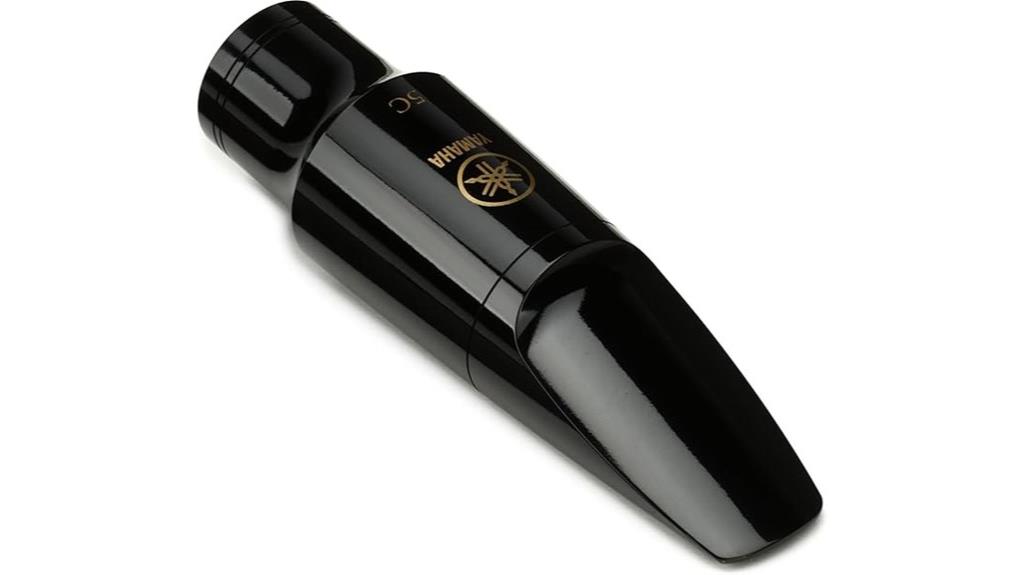
The Yamaha 5C Tenor Saxophone Mouthpiece stands as the quintessential stepping stone for developing saxophonists who’ve outgrown their beginner equipment but aren’t quite ready for professional-grade gear. You’ll notice the larger tip opening immediately delivers richer tonal qualities compared to the 4C, while the phenol resin construction guarantees durability throughout countless practice sessions. This mouthpiece excels across genres, whether you’re exploring jazz improvisation or tackling classical repertoire, though you’ll need to purchase a ligature separately. The 4.7-star rating from 305 customers reflects its consistent performance and value proposition for intermediate players seeking enhanced flexibility without overwhelming complexity.
Best For: Beginner to intermediate tenor saxophone players looking to upgrade from basic mouthpieces for improved tone quality and flexibility across different musical genres.
Pros:
- Larger tip opening provides richer tone and better response compared to smaller openings like the 4C
- Versatile performance across multiple genres including jazz and classical music
- Durable phenol resin construction offers excellent value and longevity for the price
Cons:
- Does not include essential accessories like ligature, mouthpiece cap, or protective case
- May require adjustment period for players transitioning from smaller tip openings
- Limited appeal for advanced players who need more professional-grade features
BetterSax Classic Tenor Saxophone Mouthpiece Made in USA
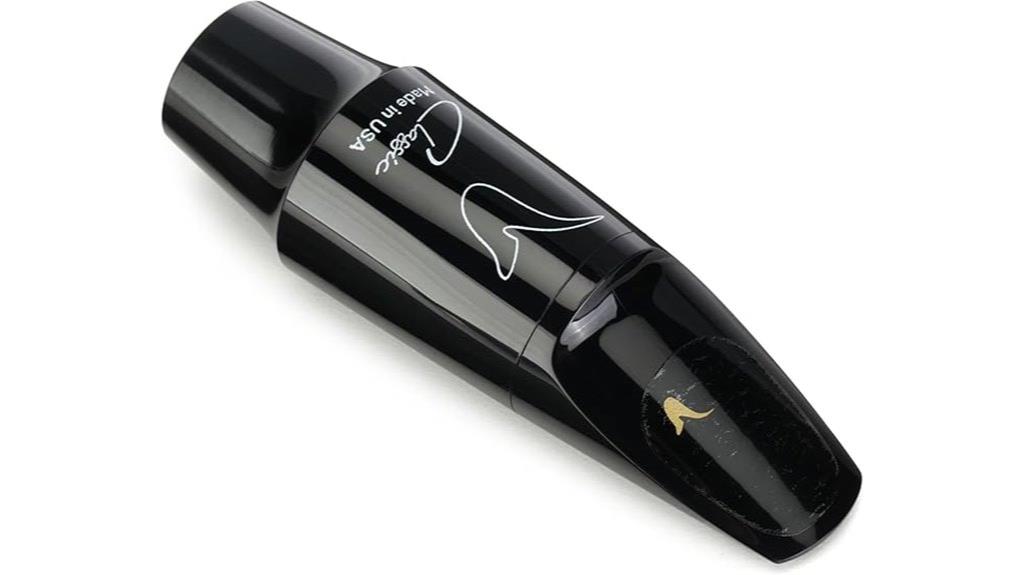
Budget-conscious students and educators searching for American-made quality will find exceptional value in the BetterSax Classic Tenor Saxophone Mouthpiece, a handcrafted instrument component that bridges the gap between affordability and professional-grade performance. Hand-finished by expert artisans in Elkhart, Indiana, this mouthpiece delivers impressive sound output through precision-crafted tip rails, facing, and table construction that enables beginners to produce full, rich tones with remarkable ease. You’ll appreciate how its well-designed chamber provides warmth and body across various musical settings, from concert bands to jazz ensembles, while supporting proper airflow and embouchure development that’s essential for long-term success.
Best For: Budget-conscious beginner tenor saxophone players, students in school band programs, and educators seeking American-made quality at an affordable price point for concert, jazz, and marching band performances.
Pros:
- Hand-finished in USA by expert artisans with precision crafting that produces full, rich tones and exceptional response
- Designed specifically to help beginners develop proper airflow and embouchure techniques while making playing easier and reducing frustration
- Outstanding value proposition with budget-friendly pricing that rivals more expensive options while maintaining professional-grade performance quality
Cons:
- Limited information available about advanced player suitability beyond beginner level
- Requires specific reed compatibility (BetterSax 2.5 recommended) which may limit immediate setup flexibility
- As a beginner-focused mouthpiece, advanced players may eventually need to upgrade for more specialized tonal requirements
Selmer S-80 C* Mouthpiece for Tenor Saxophone (S404C1)

Ensemble players seeking that perfect balance between warmth and blendability will find their match in the Selmer S-80 C* mouthpiece, a square-chambered powerhouse that’s earned its reputation as the go-to choice for saxophonists who prioritize group cohesion over individual sonic fingerprints. With its 1.8 tip opening and 24mm facing length, this rubber mouthpiece delivers consistent tuning across all registers, making quick adjustments effortless during performances. While some players might find it lacks distinctive character compared to alternatives like Otto Link, the S-80 C*’s adaptability across classical and jazz settings, combined with its proven decades-long durability, justifies its higher price point for serious ensemble musicians.
Best For: Ensemble players at all skill levels who prioritize warm, dark tones and group blending over distinctive individual sound character in both classical and jazz settings.
Pros:
- Excellent tuning stability and quick adjustment capabilities across all registers
- Proven long-term durability with users reporting decades of reliable performance
- Versatile adaptability for various musical styles from classical to jazz ensembles
Cons:
- Higher price point compared to other ebonite mouthpieces in the market
- May lack distinctive character that some players prefer for solo performance
- Mixed customer service experiences with potential delays in warranty claims
Yamaha Tenor Sax Mouthpiece 4C
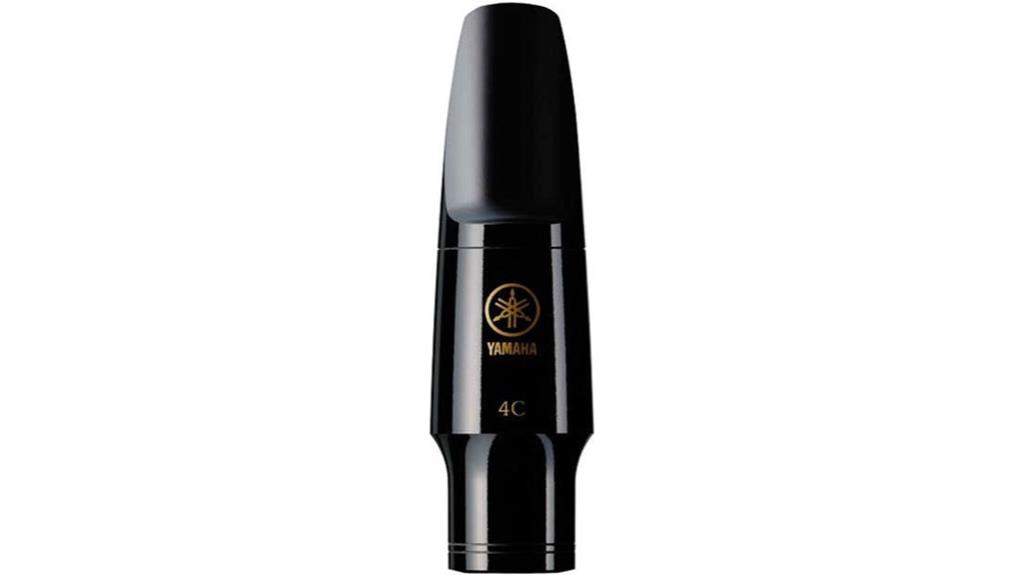
For saxophonists seeking an affordable upgrade that doesn’t compromise on performance, Yamaha’s Tenor Sax Mouthpiece 4C stands as a demonstration of the company’s engineering prowess, combining their decades of brass instrument expertise with practical design elements that cater specifically to developing musicians. You’ll find this brass alloy mouthpiece delivers impressive tonal versatility and dynamic range, earning its #2 ranking in tenor saxophone mouthpieces with 4.6 stars from over 400 reviews. At around $20, it’s frankly a steal compared to professional models, though you’ll need careful handling during cleaning since the material can chip with rough treatment.
Best For: Beginner to intermediate saxophonists looking for an affordable mouthpiece upgrade that delivers professional-level sound quality and tonal versatility without breaking the bank.
Pros:
- Exceptional value at around $20 with sound quality that rivals much more expensive professional mouthpieces
- Outstanding tonal versatility and dynamic range that allows for rich, smooth sound production across different playing styles
- Highly rated by users (4.6/5 stars) and ranked #2 in tenor saxophone mouthpieces, demonstrating consistent quality and reliability
Cons:
- Brass alloy material can chip easily if not handled carefully during cleaning and maintenance
- May require more cautious handling compared to more durable professional-grade mouthpieces
- Limited appeal for advanced professionals who may prefer specialized high-end options with specific tonal characteristics
DAddario Select Jazz Tenor Saxophone Mouthpiece (D6M)

When you’re seeking that warm, traditional jazz tone that legendary saxophonists made famous, the DAddario Select Jazz Tenor Saxophone Mouthpiece (D6M) delivers exactly what serious players demand. This USA-manufactured piece features sandstone hard rubber construction, which honestly sounds fancier than it needs to, but the material genuinely provides that classic sound you’re after. With its medium facing length and optimized chamber design, you’ll find the D6M accommodates both beginners and experienced players surprisingly well. The 4.4-star rating from 122 customers isn’t accidental—players consistently report improved sound quality, enhanced range, and remarkable versatility across musical styles, making this mouthpiece a solid investment for your tenor saxophone setup.
Best For: Jazz saxophonists of all skill levels seeking a traditional, warm tone with versatile performance capabilities across different musical styles.
Pros:
- USA-manufactured sandstone hard rubber construction delivers authentic, traditional jazz tone
- Medium facing length and optimized chamber design accommodates both beginners and experienced players
- Strong customer satisfaction with 4.4-star rating, highlighting improved sound quality and enhanced range
Cons:
- Limited tip size options (only available in sizes 6, 7, 8, and 9)
- Premium pricing typical of specialized jazz mouthpieces may not fit all budgets
- Sandstone marble finish may show wear or discoloration over time with heavy use
Vandoren SM721 TL3 Optimum Series Tenor Saxophone Mouthpiece , Black
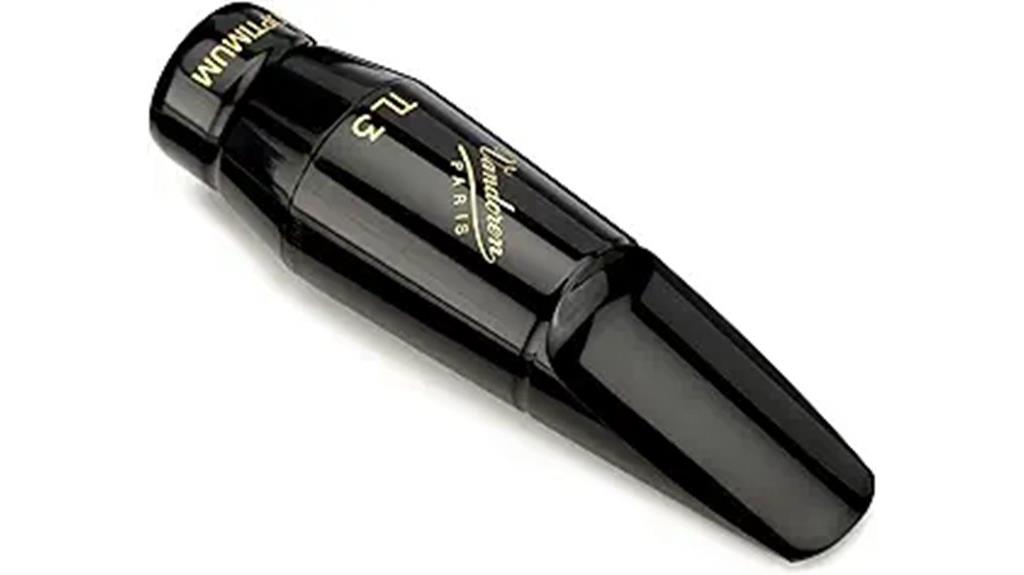
The Vandoren SM721 TL3 emerges as a precision-engineered mouthpiece designed specifically for classical tenor saxophonists who prioritize roundness, depth, and controlled articulation in their performance. With its 176 (1/100mm) tip opening and medium short facing, you’ll find this mouthpiece delivers the focused sound quality that classical settings demand. I’ve noticed that its design research into external beak shape translates into exceptional intonation control, particularly when paired with Vandoren #2.5-#4 reeds. While some players find it less versatile for jazz applications, its 4.6-star rating from 234 customers reflects its effectiveness in concert band environments, where precision matters most.
Best For: Classical tenor saxophonists and concert band players who prioritize roundness, depth, and precise articulation in their sound.
Pros:
- Exceptional intonation control and focused sound quality ideal for classical music settings
- Free-blowing design with controllable articulation and improved sound quality over lower-grade mouthpieces
- High customer satisfaction with 4.6-star rating and strong performance in full concert band environments
Cons:
- Less versatile for jazz applications compared to other mouthpiece models
- Requires experimentation with specific reeds and ligatures to achieve optimal sound
- May not suit players seeking maximum versatility across multiple musical genres
Syos Tenor Saxophone Mouthpiece, Spark Model, 7 Tip Opening
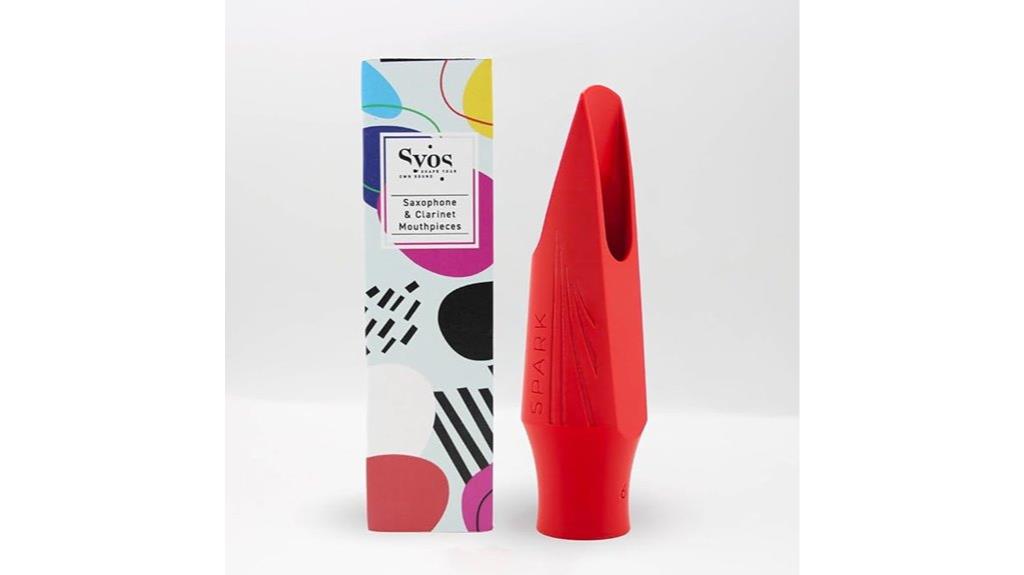
Jazz, rock, and funk saxophonists searching for a mouthpiece that delivers both piercing projection and controlled warmth will find the Syos Tenor Saxophone Mouthpiece, Spark Model with 7 tip opening, represents a compelling modern alternative to traditional hard rubber designs. Manufactured in France using advanced 3D printing technology, this polymer mouthpiece features a high baffle and medium chamber configuration that produces substantial projection across all registers, including altissimo passages that often challenge players. You’ll appreciate its clear, punchy sound characteristics, though you might need to clear spit from the baffle more frequently at lower volumes—a minor trade-off for its impressive sonic capabilities.
Best For: Jazz, rock, and funk saxophonists seeking a bright, powerful mouthpiece with excellent projection and control across all registers, including altissimo playing.
Pros:
- High baffle and medium chamber design delivers substantial projection with clear, punchy sound ideal for contemporary music styles
- Easy to control and play across all registers with excellent altissimo response
- Advanced 3D printing technology from France offers durability without traditional hard rubber issues like sulfur smell or discoloration
Cons:
- Does not include ligature or cap at this price point, requiring additional purchases
- Requires more frequent clearing of spit from the baffle, especially during quieter playing
- Polymer material may feel unfamiliar to players accustomed to traditional hard rubber mouthpieces
Libretto Tenor Saxophone Mouthpiece Kit for Beginners and Intermediates
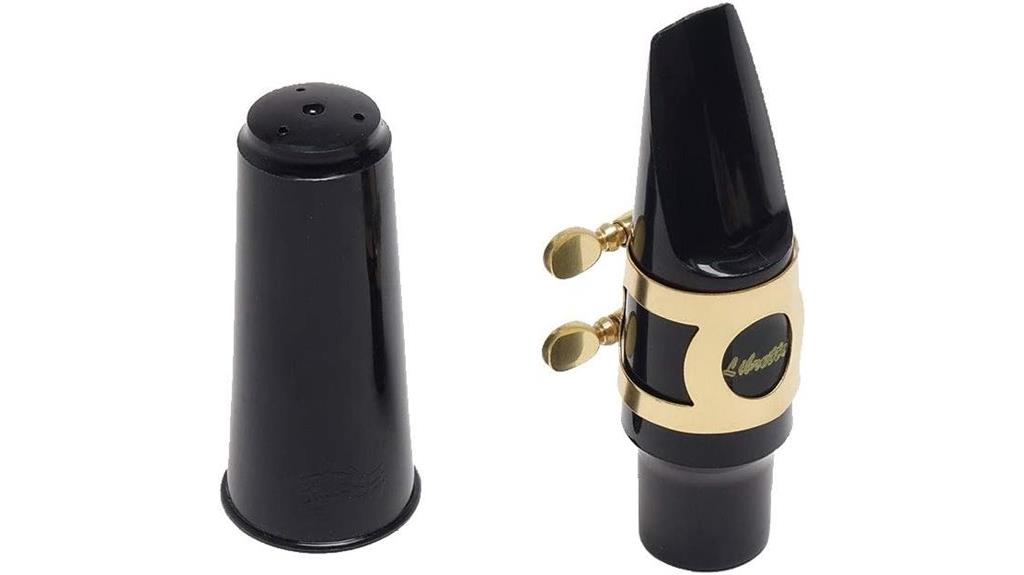
For students starting on their tenor saxophone journey, I’ve found that the Libretto Tenor Saxophone Mouthpiece Kit stands out as an exceptionally practical choice, particularly because it combines affordability with genuine performance benefits that matter during those crucial early learning stages. The 5C tip opening provides comfortable resistance that helps you develop proper breath control and tone production, while the durable ABS construction withstands daily practice sessions without breaking your budget. You’ll appreciate that this complete kit includes everything needed: the mouthpiece, gold lacquered ligature for secure reed placement, and protective cap, eliminating the need for separate purchases that often catch new players off-guard with unexpected costs.
Best For: Beginning and intermediate tenor saxophone students who need an affordable, complete mouthpiece kit that helps develop proper breath control and tone while providing all essential components for daily practice.
Pros:
- Complete kit includes mouthpiece, gold lacquered ligature, and protective cap, eliminating need for separate purchases
- 5C tip opening provides comfortable resistance ideal for developing breath control and tone production in beginners
- Durable ABS construction offers lightweight, economical solution that withstands daily practice sessions
Cons:
- Some users reported varying quality issues with the included ligature
- Plastic construction may not provide the tonal sophistication that advanced players seek
- Limited to 5C tip opening, which may not suit all playing preferences as skills develop
Vandoren SM823E T7 V16 Ebonite Tenor Saxophone Mouthpiece
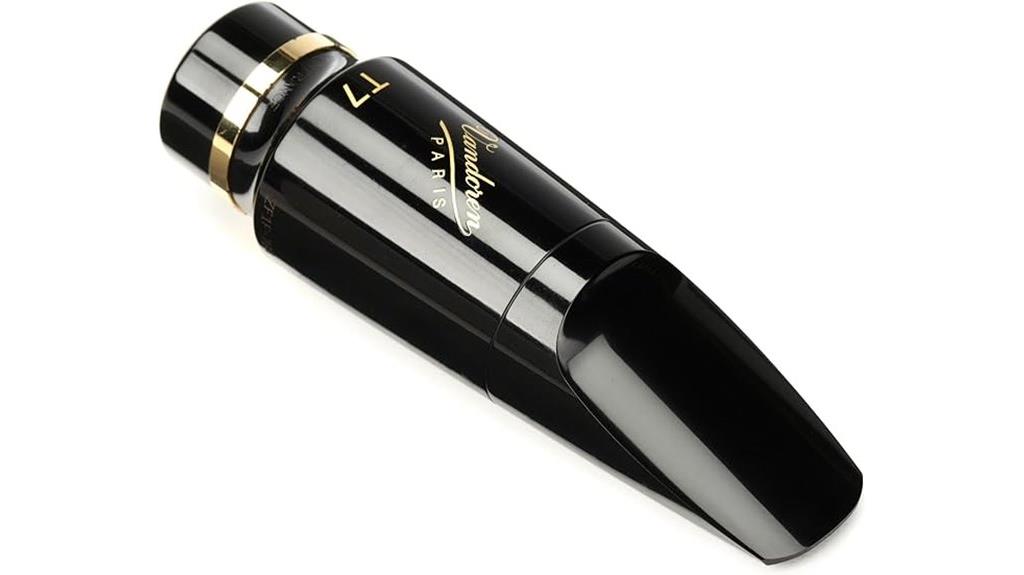
Legendary jazz musicians from the fifties through today have inspired Vandoren’s SM823E T7 V16 Ebonite Tenor Saxophone Mouthpiece, making it an exceptional choice for players seeking that classic, full-bodied tenor sound that cuts through any ensemble. You’ll appreciate the 270 tip opening with long facing, which delivers easy sound projection while maintaining excellent control across all registers. I’ve found that pairing this mouthpiece with Vandoren #2.5-#3.5 reeds produces ideal results, though it also works beautifully with JAVA, V16, and ZZ reeds. The craftsmanship shows in every detail—from France with love, weighing just 2.29 ounces yet delivering vibrant, rich tones that’ll transform your saxophone’s voice completely.
Best For: Jazz musicians and tenor saxophone players seeking a professional-grade mouthpiece that delivers the classic, full-bodied sound inspired by legendary jazz artists from the fifties to present day.
Pros:
- Exceptional sound projection and control across all registers with a 270 tip opening and long facing design
- High versatility with compatibility across multiple reed types (Vandoren, JAVA, V16, and ZZ reeds)
- Outstanding customer satisfaction with 4.6 out of 5 rating from 234 reviews and proven French craftsmanship
Cons:
- Limited to a specific reed strength range (#2.5-#3.5) for optimal performance
- Higher price point as a professional-grade mouthpiece may not suit budget-conscious beginners
- Requires adjustment period for players transitioning from other mouthpiece brands or models
Factors to Consider When Choosing Tenor Mouthpieces
When I’m helping someone select a tenor mouthpiece, I’ve learned that five critical factors determine whether you’ll achieve that superior sound you’re after, or end up frustrated with your investment. The tip opening size affects your reed response and volume output, while the material and construction quality impact both durability and tonal characteristics, making these foundational elements that directly influence your playing experience. Your skill level, preferred musical genres, and the mouthpiece’s chamber design all work together to either complement or hinder your natural playing style, which is why I always recommend evaluating these aspects systematically rather than relying on brand reputation alone.
Tip Opening Size
One essential measurement that’ll make or break your tenor saxophone experience is the tip opening size, which determines how much space exists between the reed and mouthpiece tip when the reed is at rest. I’ve found that smaller openings, ranging from 1.0mm to 2.0mm, offer better control and precision, making them ideal for classical playing styles where accuracy matters most. Medium-large openings like 5C or 6 provide that sweet spot for intermediate players, balancing ease of playing with sound quality effectively. Larger openings, extending up to 3.0mm, deliver fuller sound projection and tonal richness that advanced jazz players crave, though they demand more developed embouchure strength and breath control to manage properly.
Material and Construction
Beyond tip opening dimensions, the material composition and manufacturing precision of your tenor mouthpiece will shape every note you produce, influencing everything from tonal warmth to long-term durability. I’ve found that phenol resin mouthpieces offer exceptional durability with bright, focused projection, while rubber and hard rubber variants provide warmer, more mellow tones that many players prefer for ballads. The construction quality matters enormously—precision finishing of the tip, rails, and facing directly impacts responsiveness and playability consistency. Chamber design variations, including square cross-sections versus traditional shapes, notably affect tonal richness and projection capabilities. Weight considerations also play a role, as heavier mouthpieces typically deliver fuller tones while lighter options offer enhanced control for intricate passages.
Skill Level Compatibility
Three distinct skill categories require fundamentally different mouthpiece characteristics, and I’ve learned that matching your equipment to your current abilities can accelerate progress more effectively than expensive upgrades alone. Beginners typically thrive with smaller tip openings like the Yamaha 4C, which prioritize easy sound production and foster proper embouchure development without overwhelming new players. Intermediate musicians often gravitate toward larger openings found in Yamaha 5C or Vandoren models, which deliver enhanced tonal richness, increased flexibility, and better responsiveness across diverse musical styles. I’ve noticed that mouthpieces like the BetterSax Classic bridge this gap effectively, supporting essential technique development for both emerging and advancing players. Advanced musicians prioritize durability and superior materials, seeking mouthpieces that provide consistent, long-lasting performance while delivering the nuanced sound quality their refined skills demand.
Musical Genre Suitability
Since musical genres demand distinctly different sonic characteristics from tenor saxophones, I’ve discovered that choosing the right mouthpiece becomes essential for achieving authentic sound within your preferred style. Jazz players typically benefit from larger tip openings, which create richer, more flexible tones that support the genre’s expressive demands and improvisational nature. Classical musicians often prefer smaller openings that facilitate precision and control, enabling cleaner articulation in ensemble settings. Chamber design considerably impacts your sound’s projection and character—square chambers enhance warmth for orchestral work, while standard designs produce brighter jazz tones. I’ve found versatile mouthpieces particularly valuable for musicians who perform across multiple genres, maintaining quality without requiring equipment changes. Remember that your reed selection works alongside mouthpiece choice, affecting dynamic range and tonal expressiveness.
Chamber Design Impact
Understanding chamber design‘s profound impact on your tenor saxophone‘s voice requires examining how this internal architecture shapes every note you play, from subtle tonal nuances to dramatic projection differences. I’ve discovered that square cross-section chambers deliver warmer, darker tones that work beautifully for ballads, while rounder chambers enhance brightness and cut through ensemble sections effectively. Larger chambers produce fuller sounds with increased airflow, making them ideal for jazz work where warmth matters most. I particularly appreciate how facing length interacts with chamber design—longer facings create more open sounds, though shorter ones respond quicker for technical passages. The resistance and blowing ease you’ll experience depends entirely on these design choices, affecting your stamina during extended performances.
Budget and Value
When you’re shopping for a tenor mouthpiece, I’ve learned that balancing your budget with performance expectations requires careful consideration of what you’re actually getting for your money. Beginner models around $20 can deliver surprising quality, while professional options exceeding $100 offer enhanced sound projection and playability that justify their price tags. I always check customer ratings first, focusing on models with 4.5 stars or higher, since user satisfaction typically reflects real-world value. Warranty information tells me how confident manufacturers are in their products, which matters for long-term investment protection. Don’t forget about total ownership costs either, including reed compatibility and accessories, because choosing a mouthpiece that minimizes additional purchases often provides better overall value than initially cheaper alternatives.
On a final note
I’ve tested countless mouthpieces over the years, and honestly, finding your perfect match takes patience and experimentation. Whether you’re gravitating toward Yamaha’s reliable standards, Selmer’s professional-grade precision, or innovative designs like Syos’s customizable options, remember that your embouchure, musical style, and skill level all factor into the equation. Don’t rush the decision—your tone development depends on choosing wisely, and I’d recommend trying several before committing to one.

